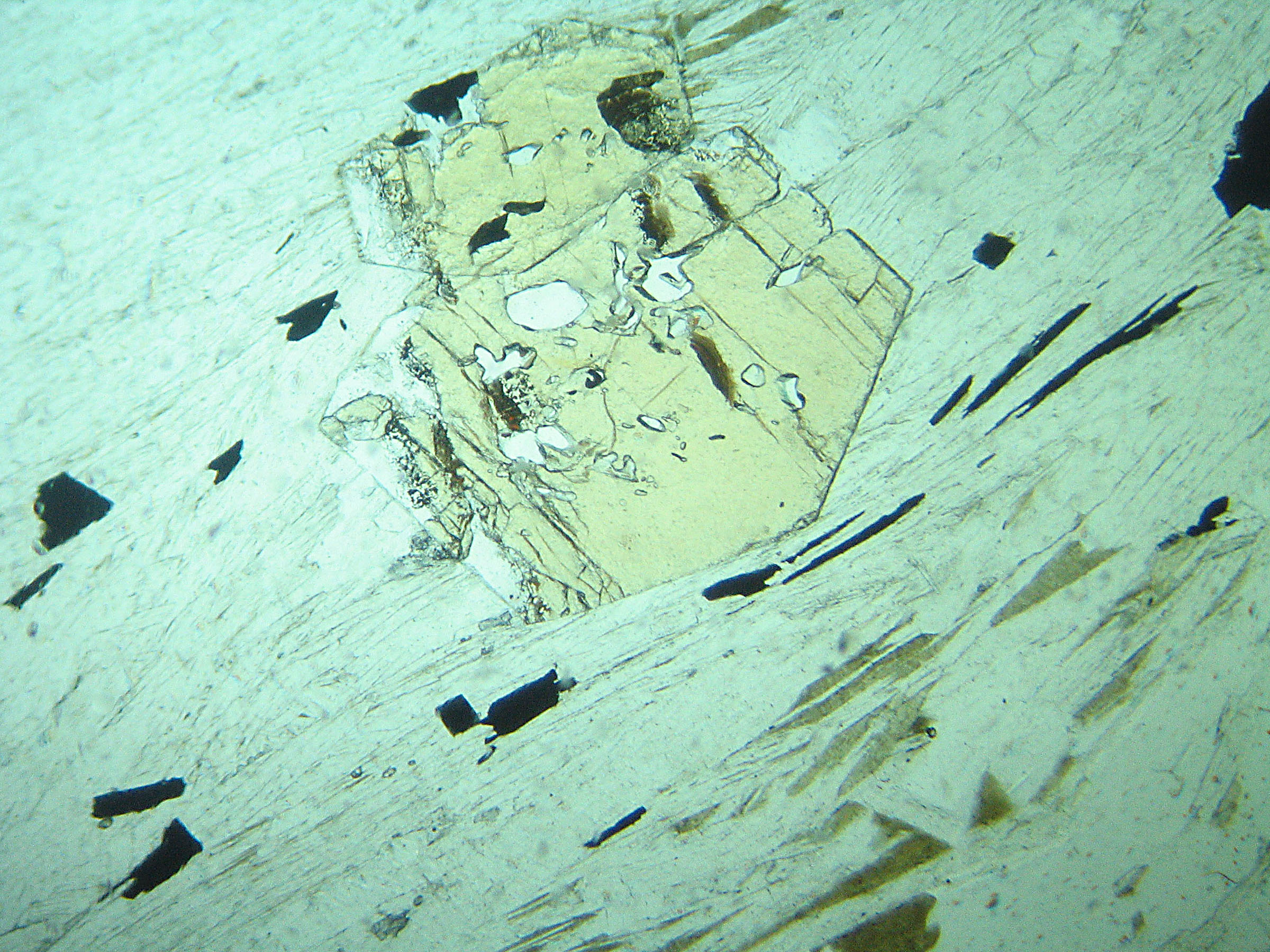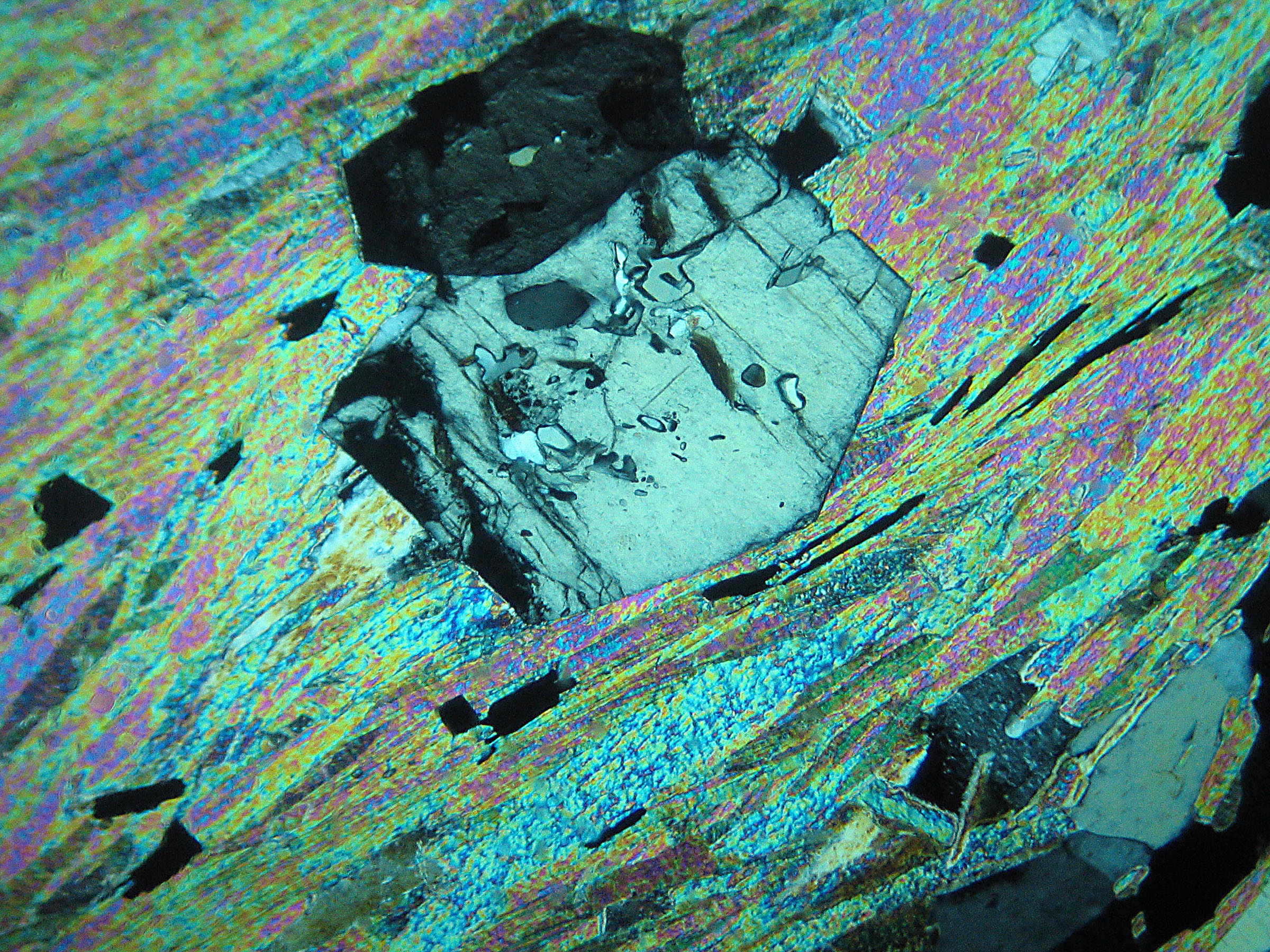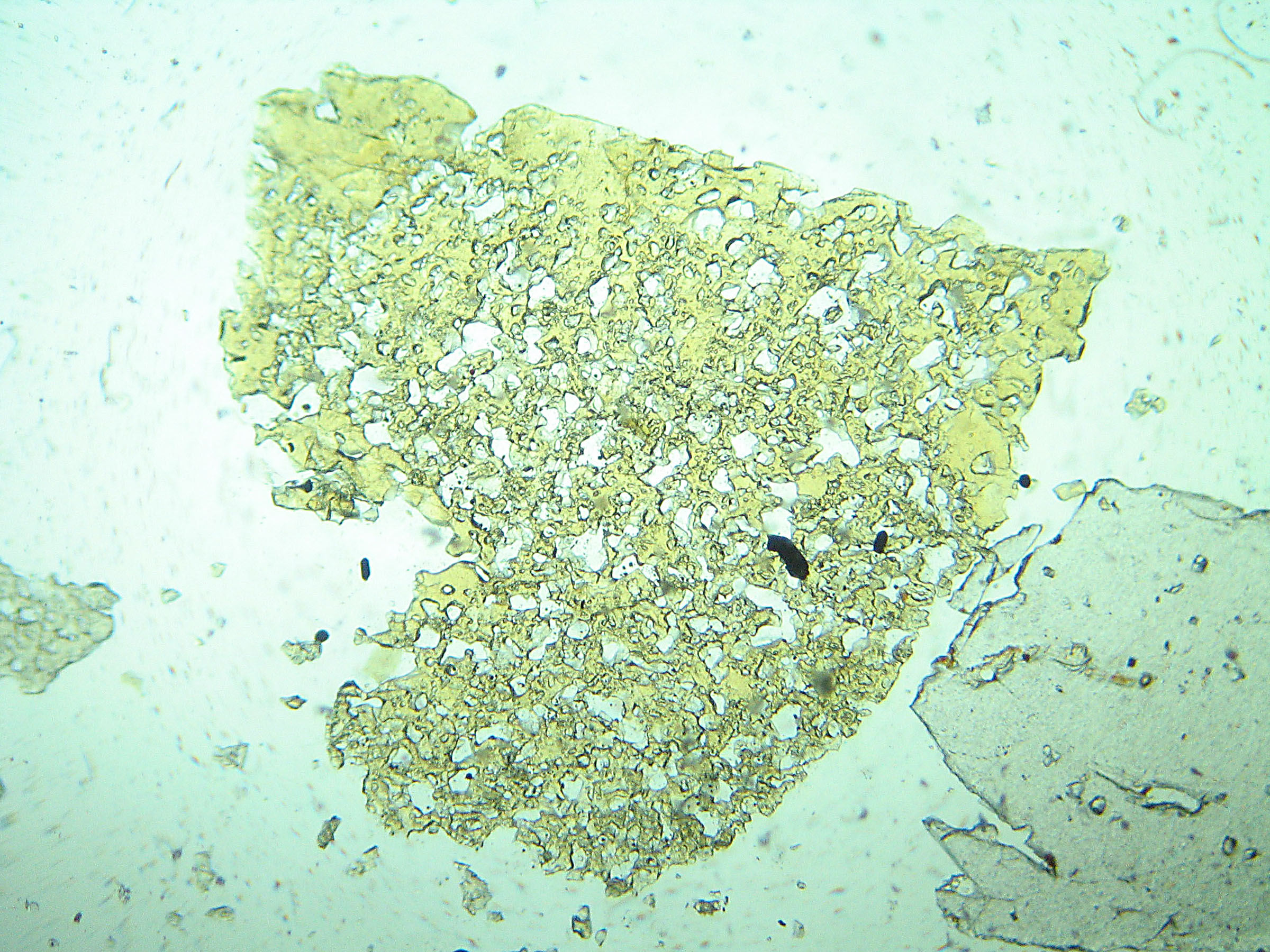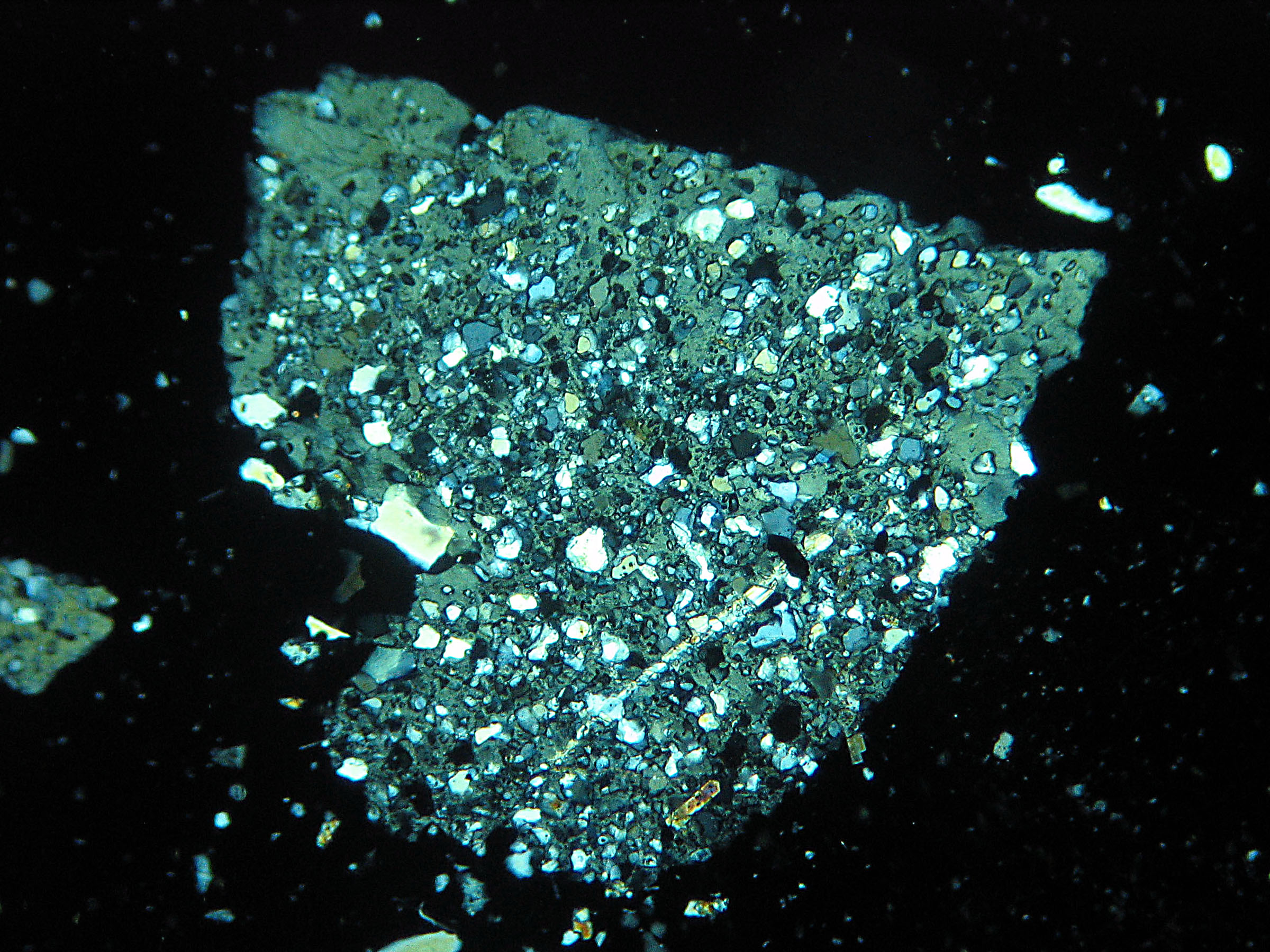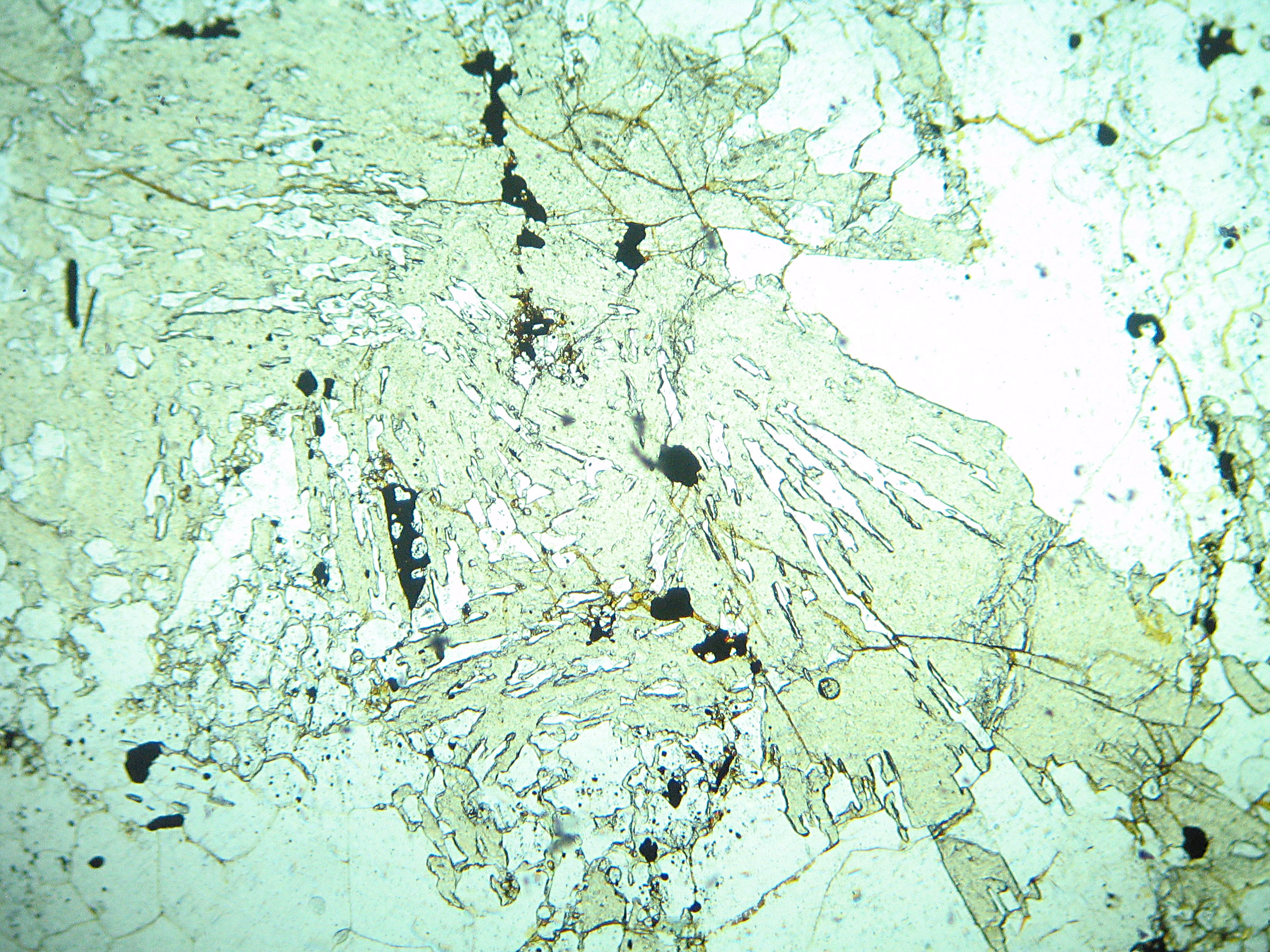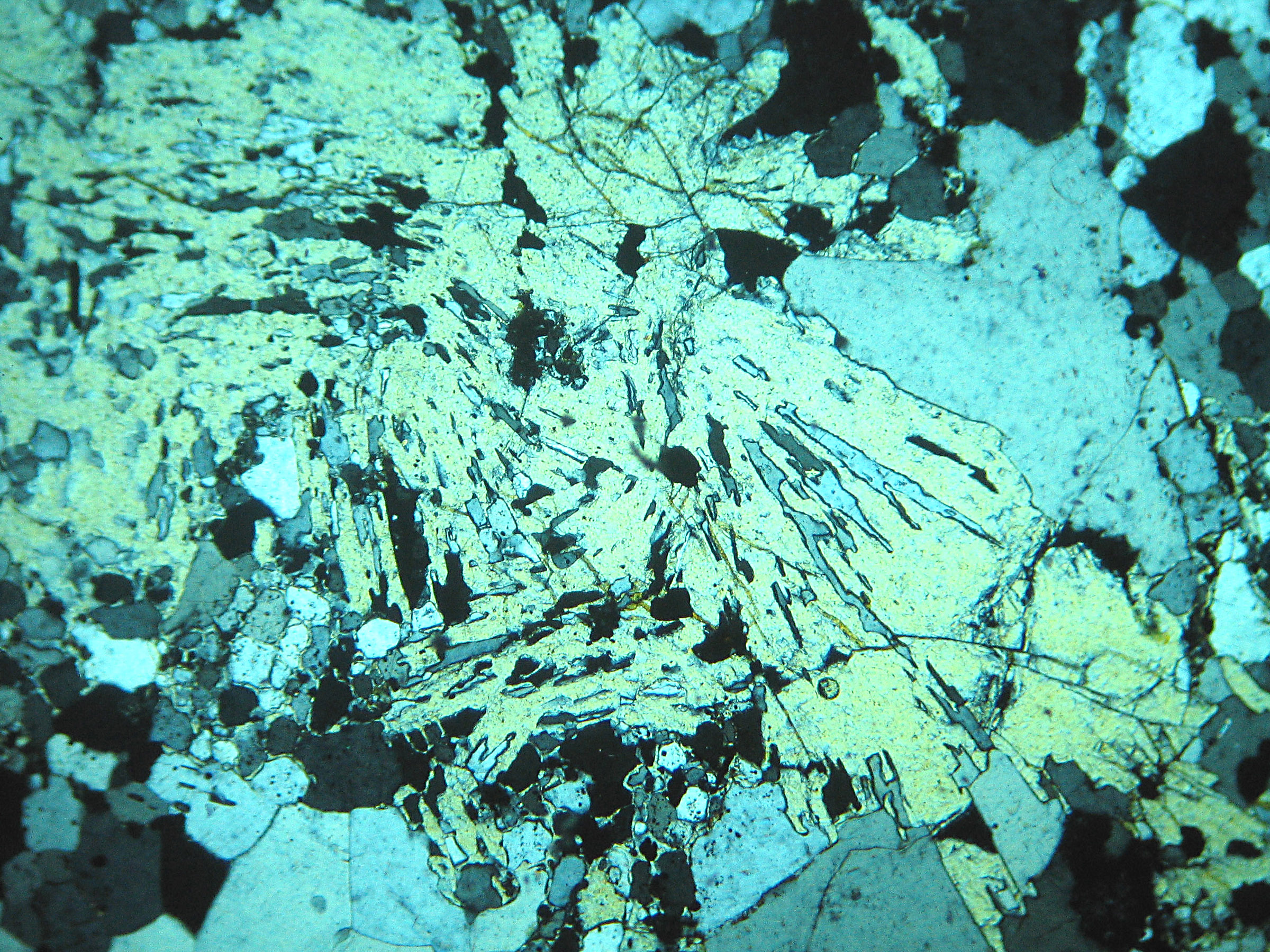Staurolite with Fibrous Sillimanite (Fibrolite)
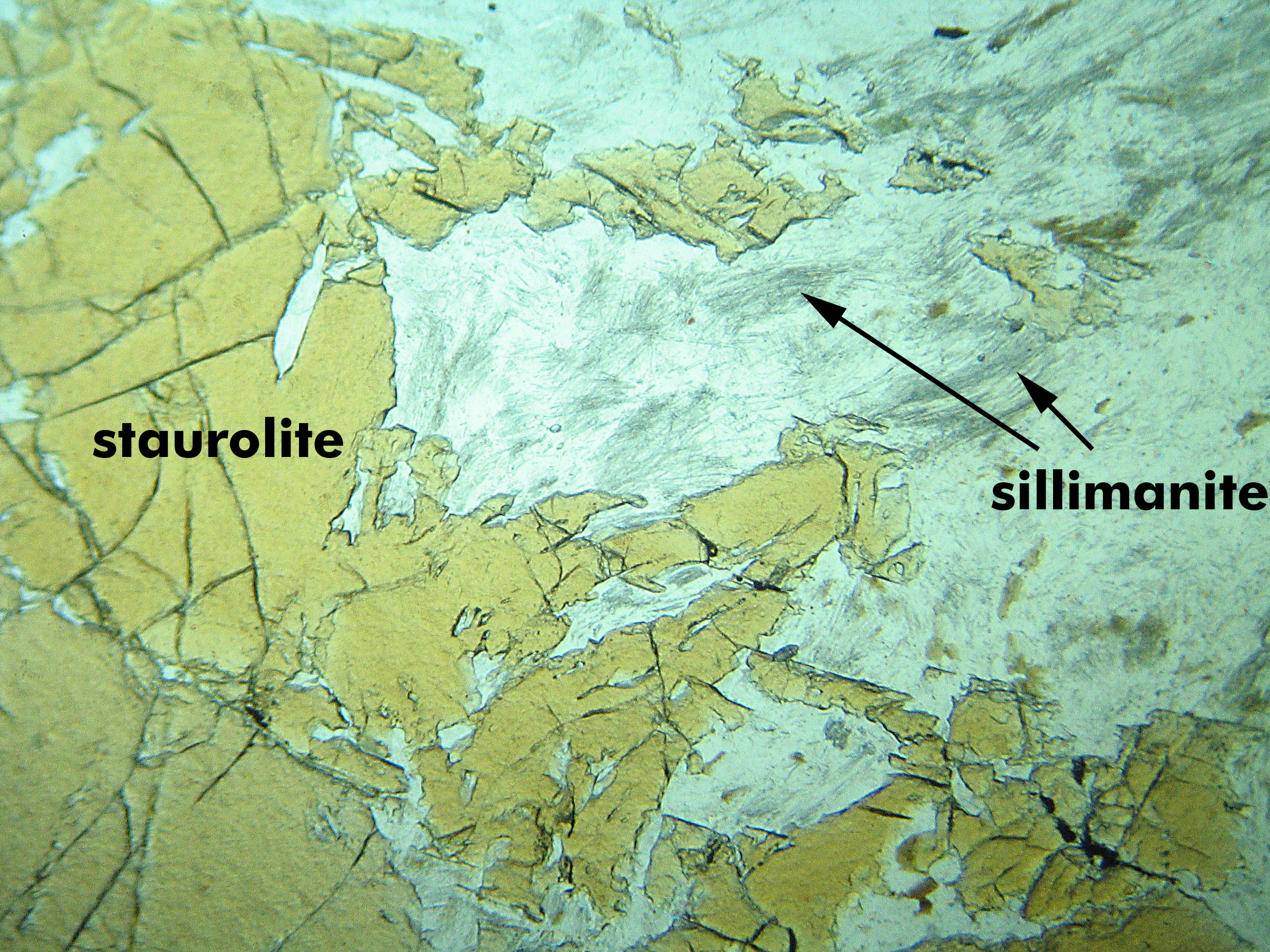
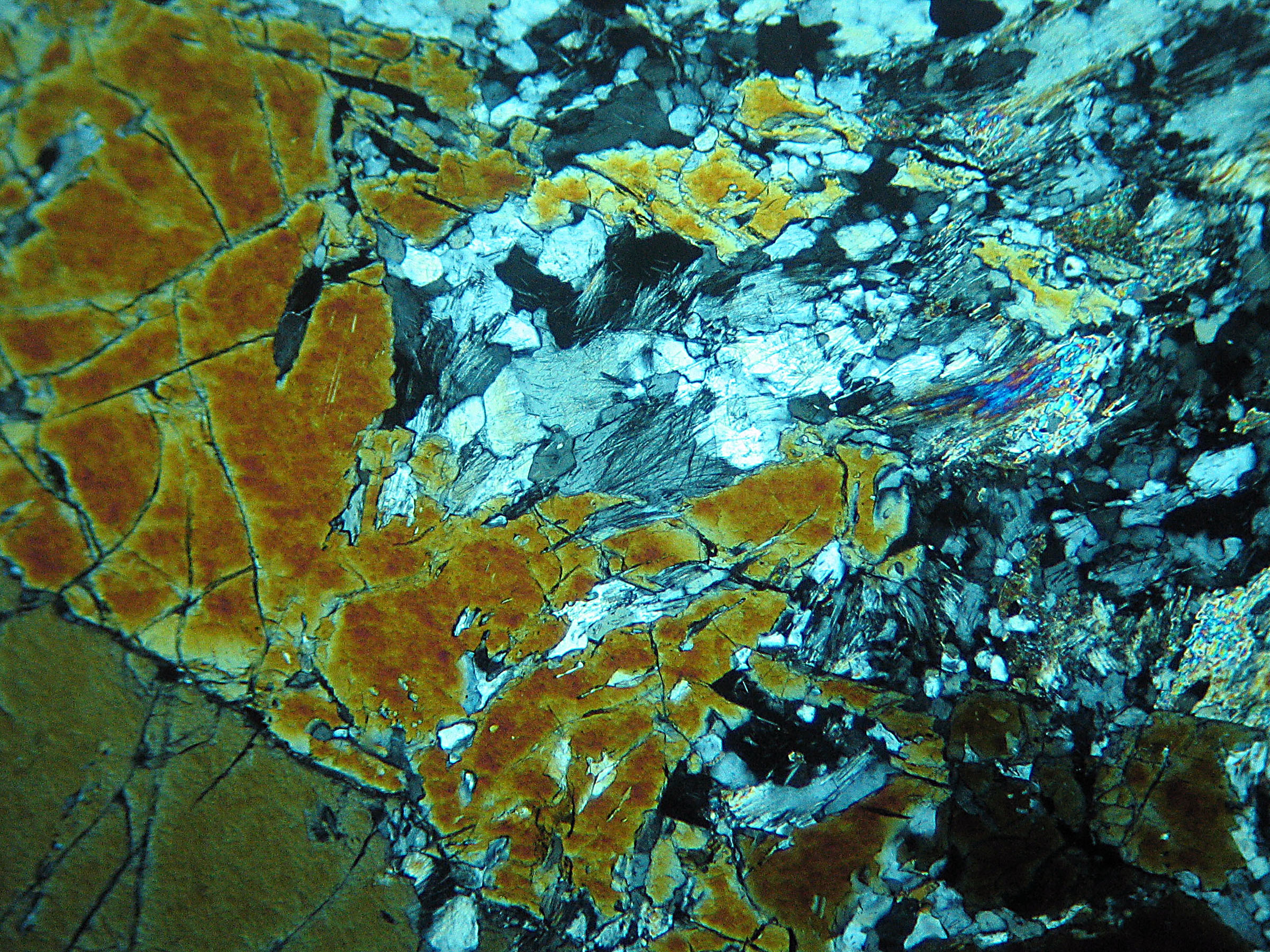
This sample, from near Poughkeepsie, New York, contains a large yellow mass of staurolite on the left hand side (PP). The material to the right of the staurolite is mostly a mix of granular quartz and fine fibrous sillimanite. Some of the sillimanite shows upper second order interference colors but most is so fine grained that interference colors are hard to see. Minor muscovite is also present.
The field of view is about 3.5 mm.
